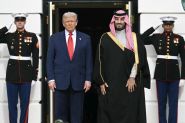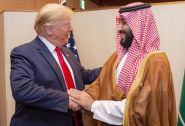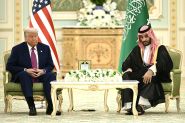- Home
- Middle East
- Renewables and Diversification: The Gulf’s Strategy

©This is Beirut
After decades of prosperity built on fossil fuels, the Gulf monarchies are increasingly turning toward green hydrogen, pursuing a dual goal: diversifying their economies and demonstrating a credible commitment to tackling climate change. As Karim Elgendy, an ecological transition specialist, told AFP, “The Gulf states want to lead the global hydrogen market.”
Today more than ever, these countries must broaden their economic base to prepare for the post-oil era. Renewable energy has become an increasingly compelling alternative.
Renewables: A New Pillar of Diversification
Although the first signs of economic diversification appeared in the Gulf as early as the 1980s, clean energy only began to gain momentum in the 2010s. To gradually reduce reliance on oil revenues, Gulf states started crafting national strategies with clear targets. These plans have primarily translated into large-scale investments in low-carbon technologies.
Qatar and Bahrain were the first to adopt national strategies in 2008, though their initial goals were modest. Qatar later strengthened its commitments in 2015. In 2016, Saudi Arabia launched its Vision 2030 plan, marking a turning point with more ambitious objectives: the Kingdom aims to produce 50% of its electricity from renewable sources by 2030. The United Arab Emirates followed in 2017 with its Energy Strategy 2050, which targets 44% clean energy by 2050.
Since 2015, the Gulf Cooperation Council (GCC) countries have invested more than $100 billion in clean energy, including solar, wind, hydrogen and carbon capture technologies.
Beyond national strategies, Gulf states have signed numerous agreements with major partners such as China and the European Union, which are global leaders in low-carbon innovation. These partnerships focus on infrastructure development, strategic energy cooperation and technology transfer.
In an article published in April 2025 by the French Institute for International and Strategic Affairs (IRIS), Emmanuel Hache, director of research on energy foresight and natural resource economics, noted that this transition will inevitably weaken Gulf economies in the short term. The sharp drop in oil prices in 2014, driven by oversupply from the US shale boom and slowing global demand, exposed their vulnerability and underscored the urgency of diversifying into alternative energy sources.
Structural Obstacles and Persistent Challenges
Despite these diversification efforts, oil remains the backbone of Gulf economies. According to an IMF report published in December 2023, hydrocarbons still account for an average of 36% of GDP across the GCC. Public finances are even more reliant, with roughly 64% of government revenue coming from oil and gas, and in some countries, as much as 75% of public income tied directly to petroleum rents.
In parallel with their renewable energy development, Gulf states have continued to heavily invest in hydrocarbons. This has fueled accusations of greenwashing, promoting a misleadingly sustainable image while maintaining polluting activities, and raised questions about the sincerity of the region’s energy transition.
While some Gulf countries have proclaimed ambitions to become global leaders in renewables, their policies still include substantial, and in some cases, growing investments in fossil fuels.
The transition also faces major environmental constraints. The report “The Impact of Land Use on Water Resources in the GCC Region” highlights the region’s chronic water scarcity, which limits groundwater replenishment. Agriculture and desalination, both essential yet highly energy-intensive, reinforce dependence on fossil fuels. Rapid urbanization is also driving demand for water and electricity, particularly for air conditioning, further entrenching reliance on hydrocarbons.
Despite this historic dependence, Gulf states are determined to position themselves at the forefront of low-carbon energy. The hosting of COP28 in Dubai is a clear sign of this ambition, combining a drive for energy transition with a strategy to boost regional and global influence. However, this vision continues to draw frequent criticism over perceived greenwashing and the gap between environmental pledges and actual practices.
Read more




Comments